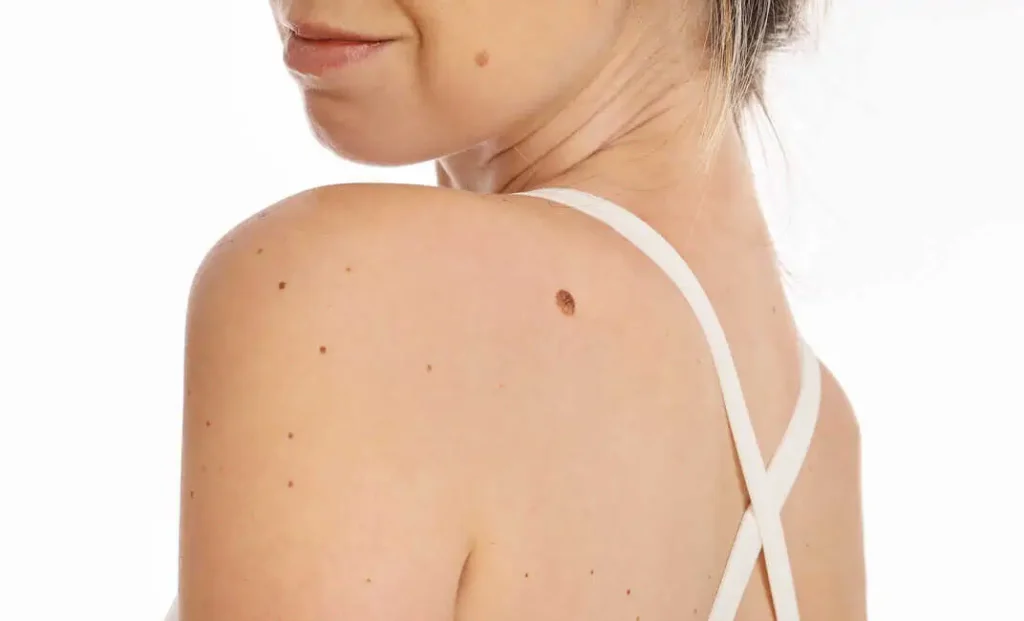

You spot a small, soft bump on your neck. It doesn’t hurt, but it isn’t very pleasant. Maybe it rubs against your clothes or jewelry. Or perhaps it’s on your eyelid, making you feel self-conscious. Sound familiar? You’re not alone.
Skin tags are incredibly common, and while they’re not dangerous, many people choose to have them removed. Sometimes it’s for comfort, other times for confidence. But how do you know when it’s time to act—and whether it’s for medical or cosmetic reasons?
Whether you’re here out of curiosity or seriously considering skin tag removal, this guide will walk you through what matters most: safety, effectiveness, and whether it’s the right choice for you.
Skin tag removal eliminates small, fleshy growths—called acrochordons—commonly appearing in areas like the neck, armpits, eyelids, groin, or under the breasts. These benign skin growths often develop where skin rubs together and, while painless, can become irritated by friction or shaving. Because they can resemble other skin conditions, it’s wise to have them evaluated by a qualified professional.
While usually harmless, people choose to have them removed for various reasons, such as:
You should consult a healthcare provider if your skin tag:
At Bloom MedSpa, we offer two of the most effective options: clipping (where the tag is snipped off) or cryotherapy, which freezes the tag using a targeted application of liquid nitrogen. Both are quick, minimally invasive, and performed under sterile conditions by trained specialists.
Unlike suspicious moles or lesions, medical skin tags are generally not sent for pathology, especially when the removal is strictly for cosmetic removal purposes.
Choosing to remove a skin tag may feel like a small decision, but for many people, the emotional and physical benefits are significant. Here’s how skin tag removal can improve your daily life:
These benefits are why so many people opt for treatment, even when it’s not medically necessary.
Skin tag removal in Spicer, MN is suitable for a wide range of individuals, from adults noticing changes in their skin with age to younger people prone to skin growth due to friction or genetics.
Here’s how to know if you’re a good candidate:
Even if you’re unsure, a consultation with a dermatologist skin tag specialist can help determine whether treatment is right for you.
One of the most common concerns people have is not knowing what the removal process entails. Understanding each step can ease anxiety and help you feel more prepared.
Your first step is to schedule a consultation. During this visit, your provider will evaluate the skin growth, determine if it’s a medical skin tag or purely cosmetic, and recommend the most suitable method of removal. This is also the time to ask questions and discuss any concerns.
The actual procedure is quick—usually lasting less than 30 minutes. Most people feel little to no discomfort thanks to the use of a topical anesthetic. Depending on the size and location, your provider will either clip the skin tag or apply cryotherapy to freeze it off.
Both techniques are designed for minimal pain and maximum safety.
After treatment, you may notice mild redness or a small scab where the skin tag was removed. These typically heal within 5 to 10 days. You can resume normal activities almost immediately, though it’s best to avoid sun exposure or friction on the treated area during healing.
For most, results are visible right away. The skin appears clearer, smoother, and more uniform. In some cases, a slight mark or pigmentation may remain temporarily, but this fades with time. Once removed, the same skin tag won’t grow back—although new ones may appear elsewhere in the future if you’re prone to them.
Most skin tags don’t require removal for medical purposes unless they are irritated, bleeding, or show signs of abnormal growth. If any changes occur, it’s best to seek advice from a provider.
Not really. Most procedures involve minimal discomfort, especially when a numbing agent is used. Depending on the method used, you might feel a pinch or cold sensation.
The removed skin tag itself won’t return, but if you’re prone to developing skin growths, you might see new ones over time.
You don’t have to tolerate the irritation or embarrassment that skin tags can cause. Professional skin tag removal offers a safe and lasting solution, whether for comfort, clarity, or confidence.
At Bloom MedSpa, our experienced team offers personalized care and effective options for Skin Tag Removal Treatment in Spicer, MN. We’re here to help you feel more comfortable and confident in your skin—contact us today to get started.
Ready to take the next step? Book a consultation today and let us help you look and feel your best.
Recent Post